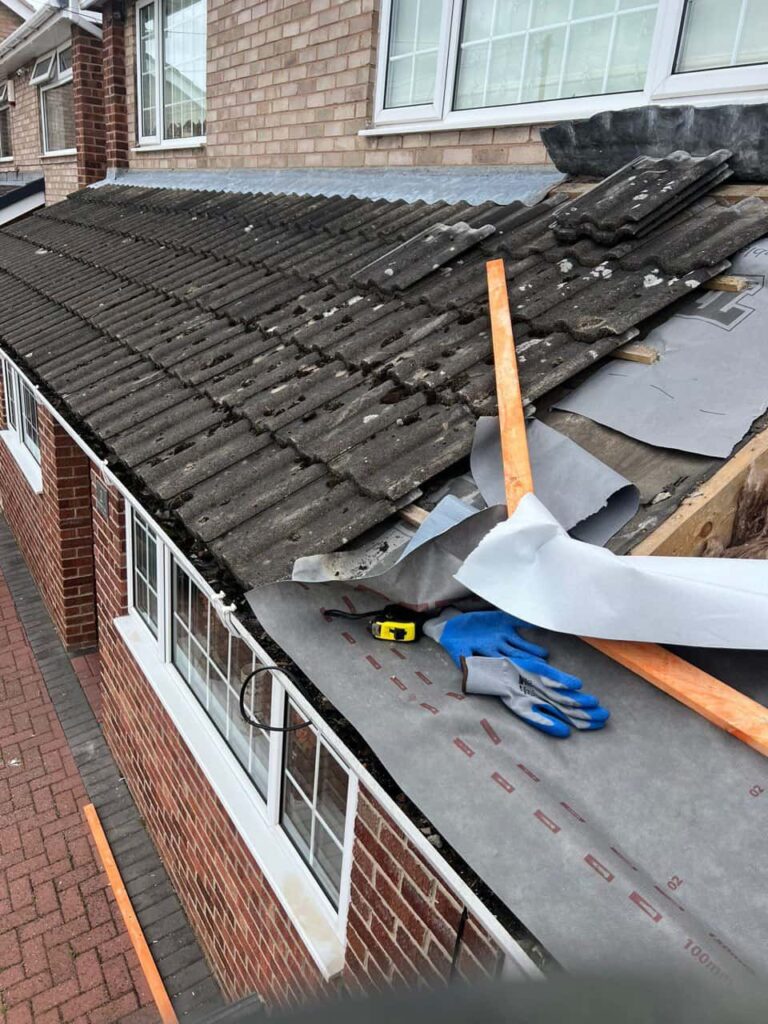A leaking roof can be one of the most frustrating and damaging problems a homeowner faces. While a minor drip may seem harmless at first, persistent leaks often hide deeper structural issues that can quickly escalate if ignored. At Selsey Roofing Repairs, we’ve seen how recurring leaks can compromise even well-built homes in Selsey, West Sussex — and we know that the key to fixing them lies in understanding the root cause, not just the symptoms.
This guide explains why roof leaks often return, how to track them down effectively, and what can be done to stop them once and for all.
Understanding the Real Cause of Persistent Roof Leaks
Not all leaks are caused by the same issue. While some result from obvious damage such as missing tiles, others stem from more subtle failures in roofing materials, design, or ventilation.
Common underlying causes include:
- Damaged or slipped tiles: Even a single displaced or cracked tile can allow water to penetrate beneath the surface.
- Worn flashing: The metal or lead flashing around chimneys, skylights, and roof valleys can corrode or lift over time, creating entry points for water.
- Clogged gutters or valleys: When rainwater can’t drain properly, it backs up under the tiles, leading to leaks in multiple areas.
- Poor workmanship: Inadequate sealing or incorrect installation techniques can cause ongoing issues, especially on flat roofs or extensions.
- Ageing roof materials: Over time, tiles, felt, and membranes deteriorate, reducing their ability to shed water effectively.
At Selsey Roofing Repairs, we start every leak investigation by inspecting these critical areas to identify whether the problem is localised or part of a wider failure in the roof structure.
Step 1: Find the Source — Not the Symptom
One of the biggest mistakes homeowners make is addressing only the visible sign of a leak, such as a ceiling stain or damp patch. The actual point of entry could be several metres away due to the way water travels along beams and insulation.
To accurately locate the leak:
- Check the loft space during rainfall (if safe to do so).
- Look for wet insulation, darkened rafters, or drips along internal timbers.
- Trace water trails upwards — they often lead to the true entry point.
- Inspect external roof features directly above or near the damp area.
Professional roofers use advanced detection tools, such as moisture meters and infrared imaging, to pinpoint hard-to-find leaks quickly and accurately.
Step 2: Repair Damaged or Failing Roof Components
Once the source is confirmed, effective repair requires more than just patching over the affected spot. The surrounding materials often need attention to prevent the issue from recurring.
Typical long-term solutions include:
- Replacing damaged or missing tiles to restore full weatherproof coverage.
- Resealing or replacing old flashing to block water ingress around roof junctions.
- Replacing degraded underfelt or membranes where water has penetrated underneath.
- Clearing and re-aligning gutters and valleys to improve drainage flow.
- Reinforcing ridge tiles or verge caps that have loosened in high winds.
At Selsey Roofing Repairs, we focus on addressing the entire section of the roof that has failed — not just the visible damage — ensuring the fix is permanent rather than temporary.
Step 3: Address Moisture Traps and Ventilation Issues
Persistent roof leaks sometimes have less to do with direct water entry and more to do with trapped condensation inside the roof space.
If your loft lacks proper ventilation, warm moist air from the home can condense on the cold underside of roof timbers, creating damp patches that mimic leaks. Over time, this can lead to rot, mould, and structural weakening.
Solutions often include:
- Installing roof vents to improve airflow.
- Ensuring insulation is properly fitted and not blocking eaves ventilation.
- Adding vapour barriers to reduce internal moisture transfer.
This step is often overlooked but is essential for homes in coastal areas like Selsey, where humidity and temperature fluctuations can accelerate condensation.
Step 4: Schedule Regular Roof Maintenance
Even a well-repaired roof can fail again if it isn’t maintained. Small issues like loose ridge tiles, minor cracks, or blocked downpipes can eventually allow water to infiltrate once more.
Homeowners should schedule annual or biannual inspections — particularly before and after the winter season — to identify and resolve issues early.
Routine maintenance should include:
- Clearing moss, leaves, and debris from tiles and gutters.
- Checking for slipped or cracked tiles after storms.
- Inspecting flashing and seals around chimneys and skylights.
- Ensuring valleys and drainage channels remain unobstructed.
Selsey Roofing Repairs offers comprehensive roof maintenance in Selsey, West Sussex to help extend the life of your roof and prevent repeat leaks from developing.
Step 5: Recognise When a Roof Needs Replacement
If leaks persist despite repeated repairs, it may be a sign that the roof structure or materials have reached the end of their useful life. When underlays, battens, or widespread tile deterioration are involved, ongoing patch repairs may only provide short-term relief.
In such cases, a professional assessment can determine whether partial or full re-roofing is the most effective solution. This ensures the entire roof performs as a cohesive, watertight system rather than relying on piecemeal fixes.
Conclusion
Persistent roof leaks are rarely just a simple problem — they’re usually a symptom of deeper issues within the roof system. Tackling the cause directly and maintaining the roof regularly are the only ways to stop leaks for good.
Selsey Roofing Repairs in Selsey, West Sussex provides expert inspections, long-lasting repairs, and preventive maintenance that help homeowners safeguard their properties against ongoing water damage. With professional care and attention, you can restore your roof’s integrity — and enjoy peace of mind knowing the leaks are gone once and for all.
Call us on: 01243 957 296
Click here to find out more about Selsey Roofing Repairs
Click here to complete our contact form and see how we can help with your roofing needs.

